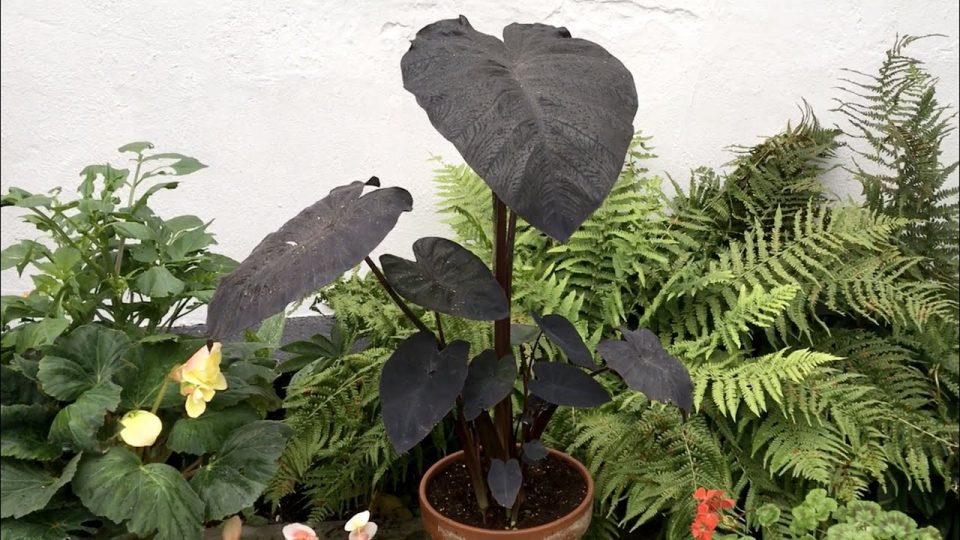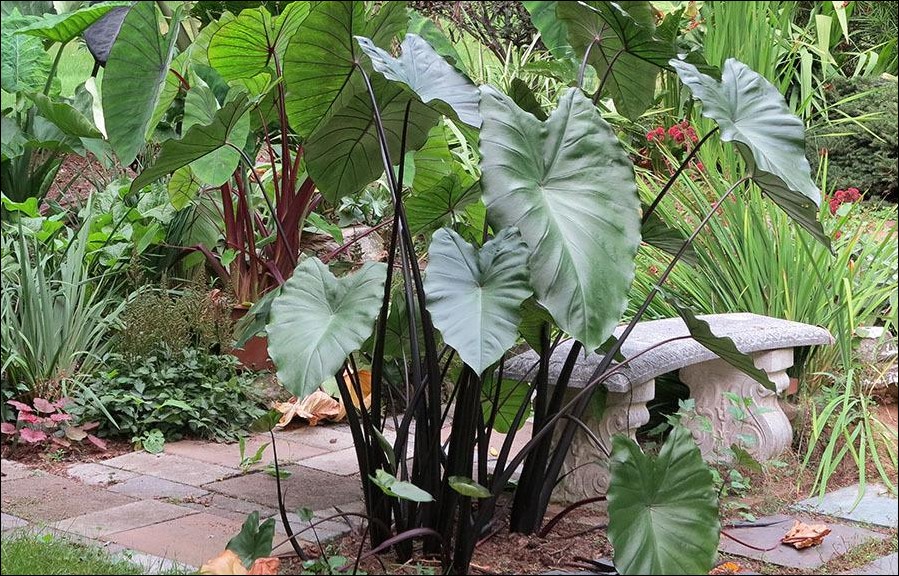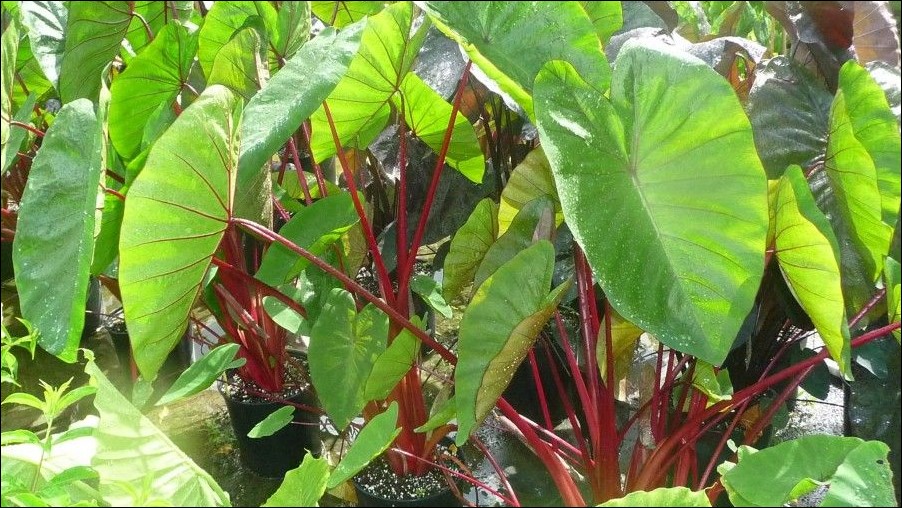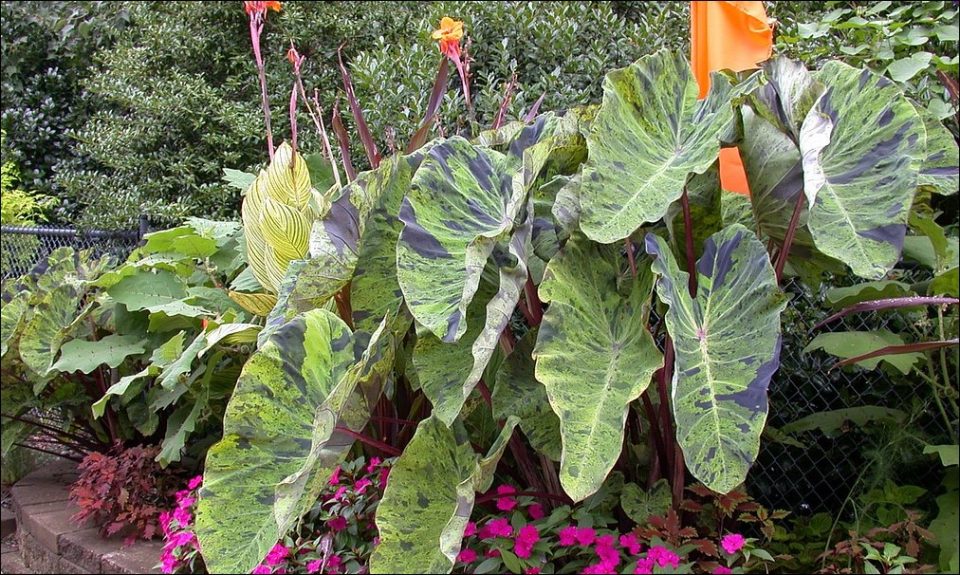Elephant Ear Plant belongs to the tropical region and is known for its gigantic leaves that resemble the shape of an elephant’s ear. The perennial plant despite being big brings ornamental value and tropical touch to the garden or container.
The plant comes in a lot of varieties and colors and they can be used as ground covers or background plants. The plant is fast-growing and reaches its full size within two months. The leaves of the Elephant Ear Plant can grow up to 3 feet long and 2 feet wide (depending on the variety) in the tropical atmosphere. However, inside homes, users can’t expect them to grow as large as they propers outdoors.

Elephant Ear Plant is a common name given to several other species in the common plant genera; Xanthosoma, Alocasia, and Colocasia. All the species can be grown outside in the gardens and also inside the home. Colocasia is most commonly planted by gardeners everywhere and they are also known as taro in some places. Also, the plant is toxic to humans and pets. So, always plant these species a little far from the reach of pets and small children.
However, the plant requires some effort while its growing phase. The plant propers if you plant it in loamy and slightly acidic soil and put it under full to partial sunlight. As a tropical plant, the plant loves a lot of water and easily survives even if the water is standing. The plant requires a good amount of humidity around and once the plant sprouts, feed them with fertilizer rich in nitrogen. With the combined effort, people can easily grow big and beautiful Elephant ear plants.
Some Common & Famous Elephant Ear Plant types:
Colocasia or the Taro is classified as the most common elephant ear plant type across the globe. Colocasia is native to the swampy and tropical areas of the southeast and you can find around 200 species of this variety. They are fantastic landscape plants that can make your garden attractive. Furthermore, we are going to mention some of the most common colocasia varieties that are loved by everyone.
- Colocasia Black Magic: Colocasia Black Magic is a plant that is the centre of attraction among different species or varieties of plants. The plant has a beautiful appearance of dusky black-blue colored leaves and it blooms with amazing yellow and red flowers.

2. Colocasia Esculenta ‘Fontanesii’ (Black Stem Elephant Ear): Colocasia Black Stem is another fabulous plant that has a beautiful burgundy-black stem with arrow-shaped leaves with a teal color. Plant this variety with lots of moisture around and you can see rapid growth in the plant.

3. Colocasia Hawaiian Punch: The plant comes from the beautiful place of Hawai and that is why it adorns the name of Colocasia Hawaiian Punch. The plant has striking lime green colored leaves with red veins on the backside that connects the stem. The Hawaiian Punch is quite compact and it is a good plant that can be grown in small containers.

4. Colocasia Mojito: The unusual variegated foliage of the amazing Colocasia Mojito plant has patterns of splashed and dashes of blue-black color. All the leaves are different from each other and like other Colocasia species the plant prefers warm soil with a good amount of moisture to provide a tropical touch to your garden.

Most Common Problems With Elephant Ear Plants
The most common problems that users face with the plants are drooping leaves, leaves turning yellow, stunted growth of leaves, and wilting. Some other common problems are caused by spider mites that damage the tiny brown and yellow spots on the leaves. When you witness webbing around the plant, it is a sign of an infestation of spider mites which might stun the growth of the plant. However, apart from these problems, the elephant ear leaf problems are mostly faced by users everywhere. The leaf problems could be different and some of them are listed here for reference:
- Pythium Rot: Pythium rot is the result of the soil being saturated for several weeks. It can be identified by yellow spots of patches over the leaves and stems. This problem can result in the death of the plant so it is better to pull out the plant entirely, remove the infected soil and sterilize the container.
- Bacterial leaf spot: The Bacterial leaf spot problem causes spots on the leaves which are brown in color and can be easily noticed by the users. While having this kind of problem, it is better for users to keep the plant in a separate location as it can affect the other plants also. However, the plant can be treated with a fungicide having copper in the initial days.
- Fungal Leaf blight: Fungal Leaf blight is a very common problem in Elephant ear plants that can be identified with lesions that damage the leaves and turn them into a purple or yellowish shade. It is a common issue that makes a fluid shape that turns into a yellowish shade when dried out. Also, the fungus causes fuzzy growth on the leaves. The fungus can be treated with a fungicide made with copper when found early otherwise it will affect the whole plant after some time.
Also read:
Types of Syngonium Plant: Attractive Varieties With Different Foliage
Best Trees For Rooftop Garden For All Seasons
Elephant Ear Plant Indoor Benefits
- The Elephant ear plants act as air freshers indoors and the users get to breathe fresh air every time at their homes.
- In Asia, the elephant ear plant is considered to be a great protector that saves houses from harm and bad luck.
- Being an ornamental plant, the elephant ear plant uplifts the whole beauty and theme of the house when planted inside the house.
- Plan the elephant ear plant bunnings in a small container and put it inside the house as it consumes harmful chemicals and gases from the environment.
Common FAQs
Q1: Do elephant ear plants need sun or shade?
Elephant ear plants belong to the tropical region where they prefer full to partial sunlight every day.
Q2: Do giant elephant ears come back every year?
Elephant ear plants are perennials and they tend to come back every summer season.
Q3: How long do elephant ears take to grow to full size?
Usually, under favorable conditions, the elephant plant can attain its full size between 14 to 20
